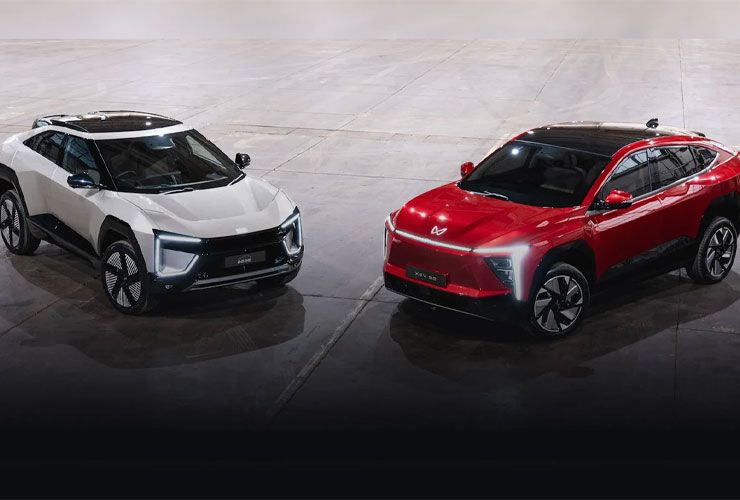Don't Rely On ADAS Completely: Mahindra Explains Using XEV 9e As Example


ADAS (Advanced Driver Assistance Systems) is becoming increasingly common in the Indian market. A multitude of modern Mahindra SUVs come equipped with ADAS suites. The Electric Origin SUVs- BE6 and XEV 9e, feature Level 2+ ADAS suites which are quite comprehensive and advanced. Many of the features offered are fancy and the same has led to owners flexing them on social media. We have come across photos and videos of BE6 and XEV 9e owners doing absurd ADAS stunts and sharing recordings of the same on the internet. Mahindra has now released a video series to coach people on the limitations and grey areas of the ADAS suites, and help them understand why relying on ADAS completely can be a terrible idea.
Before we delve into the details, it needs to be said that the BE6 and XEV 9e have one of the best ADAS systems in India. It uses five radars, a camera and a slew of sensors to function with the maximum precision possible. Mahindra seems to be addressing the average buyer's attitude issue with these videos, trying to curb his urge to go 'full autonomous' by engaging the ADAS.
The ADAS suites on XEV and BE offer features like adaptive cruise control (ACC), automatic emergency braking (AEB), and blind spot monitoring (BSM), Lane Keep Assist (LKA), Forward Collision Warning (FCW) and more.
'The first video talks about the possible vulnerabilities and limitations of the Collision Mitigation System. It advises the drivers to never rely completely on the ADAS system and take attention and human intervention off the table. The possible cases of compromised ADAS functioning are:
If a vehicle moves into the ADAS-enabled vehicle with a heading angle more than +/- 20 degrees, the system may not consider it.
Expect compromised functioning if there is poor visibility for the camera unit, due to low sunlight, fog or other external factors. At night, if the preceding vehicle has compromised, uneven or assymetric tail lamps, the ADAS efficiency may not be perfect.

The system may not consider if a pedestrian jumps into the host vehicle's lane from close proximity, or if the visual of the pedestiran's body is obstructed by things like a bag or an umbrella, or if he/she moves too fast. The functioning may not be satisfactory in case of short pedestrians.
AEBS will not detect the sudden entry of other vehicles into the host vehicle's lane. It isn't ideal to rely completely on ADAS at intersections and on gradients. We shouldn't rely on AEBS if the preceding vehicle is too tall.
AEBS doesn't slow the vehicle down for speed breakers. This is a common issue that ADAS users encounter on Indian roads. The driver has to be alert, in control and should manually slow down the vehicle for the hump/ speed breaker or potholes. AEBs also ignores barriers and blockades.
With the AEBS deployed, the host car won't slow down for oncoming vehicles. It only works for preceding vehicles which align with the path of the vehicle.
Mahindra has given a very useful feature on the electric origin SUVs- they can detect large animals like cattle, which are unfortunately common on Indian roads. The system, however, doesn't recognize small animals (think a cat!). The sensors, radars and camera should be kept clean and free of any blockage.
Another video shared on Mahindra's official channel explains the limitations of the Adaptive Cruise Control (ACC). ACC lets the vehicle follow the preceding vehicle automatically, maintaining a safe distance from it. It may have the following vulnerabilities:
It cannot detect sudden entry of vehicles into the host vehicle's lane or the sudden static obstacle in the host vehicle's lane. Tricky traffic conditions may confuse the radars and sensors onboard. Poor visibility can be a great threat.
ACC doesn't slow down for potholes or speed breakers. Unlike AEB, ACC cannot detect animals. It may not follow or stop a bicycle. One shouldn't use ACC to follow a motorcycle where there is no space for his/her vehicle to navigate. In short, human alertness and intervention are critical when ACC is deployed.
A third video explains the limitations of Lane Keep Assist (LKA). LKA controls the vehicle with steering inputs to keep it in its designated lane.
It relies on the lane markings (White lines) to detect and align the car accordingly. If there are no markings, the system cannot function. It thus cannot be used on new unmarked roads, or on those which aren't completed yet. It is better to avoid using LKA in poor visibility conditions or when the turn is too sharp.The efficiency could be affected in most of the afore-mentioned conditions.
While technologies like ADAS can be of great help in keeping the drive safe, they should be used rationally and with proper knowledge of how stuff works and the possible fail-cases. In no circumstance should the driver take his attention off or lack situational awareness. 'Human+ machine' is the way to go...